A Guide Birds At the Beach
↓ Continue Reading To See This Amazing Video
Hide those beach snacks when you hit the sand, else some infamous shorebirds might try to steal some. Or, at the least, show off their cuteness and they scuttle along the water’s edge and occasionally swoop over. There are many shorebirds of all sorts, with the American Birding Association stating that at least 172 species exist along Americans shores, divided up into 10 different families.
Frequently, we just call them gulls, terns, plovers, and sandpipers, but there are so many more – and they’re worth knowing about. Each species and subspecies have their own unique characteristics and intriguing facts.
Let’s take a look at the beautiful birds living on the beaches of America.
Types of Shorebirds
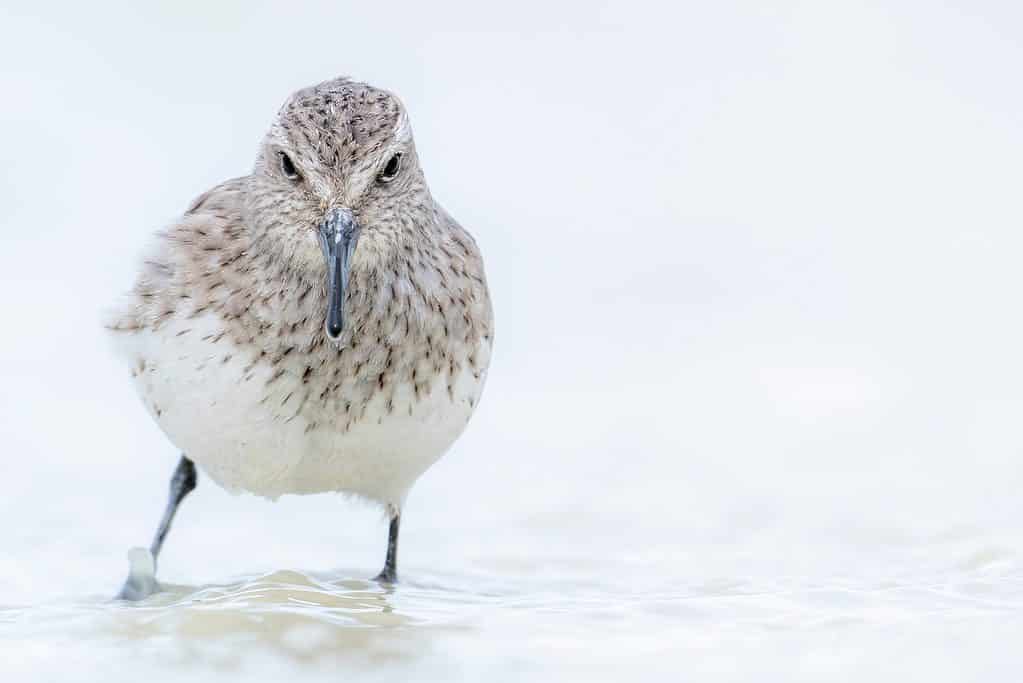
©Rob Jansen/Shutterstock.com
In North America along, about 50 species of shorebirds enjoy the coastal waters of the country. Some vagrant make their way in, often blown off course by storms and high winds. Other vagrants may swoop in for a short visit of their own accord, as well. Shorebirds range in size from the tiny at 6 inches to 24 inches.
Some of the most common shorebirds you’ll see in America belong to these families:

Shorebirds: Oystercatchers
Stocky birds that are shorter in stature than many other shorebirds, oystercatchers have long, thick, straight bills. They earn the name for their oyster prying capabilities (what those strong beaks are for!). They nab the oysters, mussels, clams, and other shellfish from among the rocks and crack them open for a nice meal. Most oystercatchers have dark plumage and thick legs.
Around 10 to 12 species of oystercatchers live around the world. Each has a small range and can typically be identified by its location, since their ranges don’t overlap, usually.
American Oystercatcher

©iStock.com/Rabbitti
In North America, the American Oystercatcher (Haematopus palliates) lives along the coasts of the Atlantic, Gulf of Mexico, and Baja California.
Black Oystercatcher
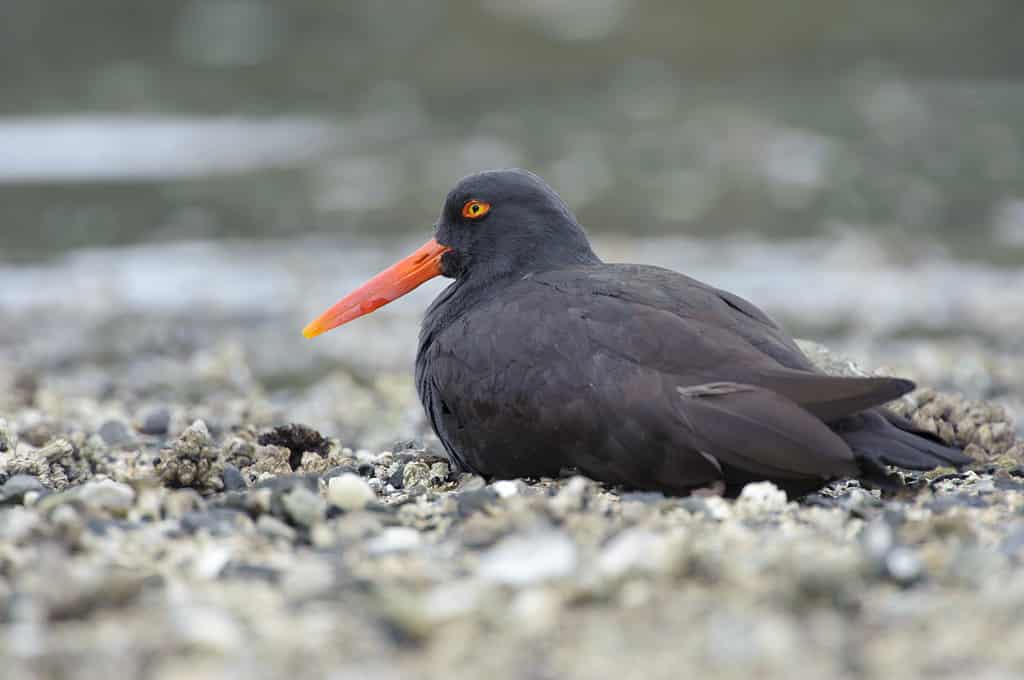
©Wildpix 645/Shutterstock.com
Haematopus bachmani, or Black oystercatchers, live along the rocky coastline of the West Coast. This oystercatcher species is taller, sometimes reaching 2 feet in height, with a bright orange bill.
Shorebirds: Plovers
About 36 species of plovers live in the United States. These are smaller, compact birds with short, thick necks, small, straight bills, and relatively short legs.
Semipalmated Plover
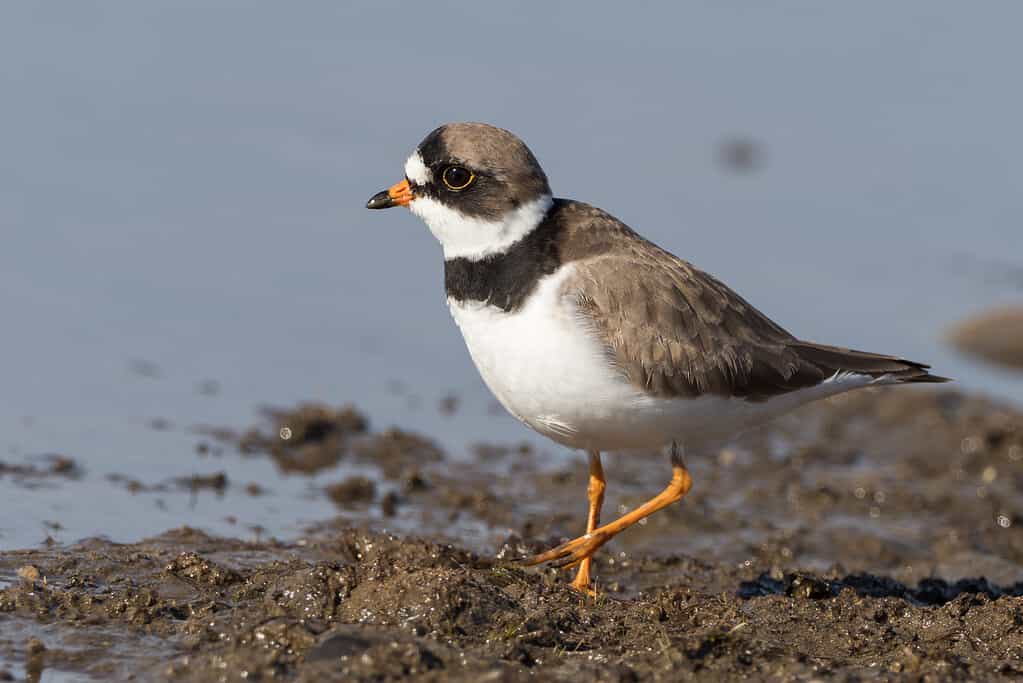
©Dee Carpenter Originals/Shutterstock.com
The semipalmated plover (Charadrius semipalmatus) adult shorebird has brown coloration on top with a white belly. A black band across the breast and orange legs and orange bills with a black tip help to identify them. During migration, these birds will often be found in salt marshes, along beaches, and in golf courses. They forage on foot, often pause and scuttle back and forth, listening for prey.
Black-bellied Plover

©Elliotte Rusty Harold/Shutterstock.com
Pluvialis squatarola or Black-bellied plover enjoy life along coastal beaches and tidal flats during winter. Breeding males have checkered upper wings and black masks that extend down the belly. Non-breeding adults have white or off-white bellies and pale gray backs. They love to forage underwater at high tide and then fly inland to agricultural fields.
Killdeer

©samray/Shutterstock.com
Adult kildeer (Charadrius vociferus) have brown to tan coloration on top, with white bellies, and tow black bands on their necks. This plover is an unusual bird, though, as it occupies dry habitats, rather than wetlands like most shorebirds. They primarily feed on earthworms, snails, and aquatic insect larvae, sometimes following farm equipment to find them. The birds are adept swimmers and enjoy their time at the beach, too. Killdeer are unique in another way: they are one of the best known “broken-wing” practitioners. That is, they fake an injury in an attempt to lure predators away from their nests. If they feel threatened otherwise, they’ll puff up and charge at creatures they fear will crush their eggs.
Shorebirds: Sandpipers
The most diverse family of shorebirds in the USA is the sandpiper family. The colors and sizes range widely, from tiny birds to the large. About 80 to 90 species exist.
Least Sandpiper

©Carrie Olson/Shutterstock.com
The least sandpiper (Calidris minutilla) adult has a brown back and white underbelly, with black bills, and green to yellow legs. The birds are always in the sand and mud, it seems, as they show up with muddy legs pretty much anywhere they go. The least sandpiper is the smallest shorebird in the US. They hang out at coastal and inland habitats alike during migration. It’s believed that they travel some 2,500 miles non-stop to find their wintering habitats in South America. Males are noisy during breeding season, putting on a display for the females in the hopes of attracting a mate.
Spotted Sandpiper

©Agami Photo Agency/Shutterstock.com
The Actitis macularius or spotted sandpiper has a gray-brown body with white breasts and pale-yellow bill in wintertime. The breeding adults also display dark brown speckles across their bodies. They actively forage and use a distinctive hunting style, meaning along paths and suddenly darting at prey. They eat insects and small crabs and bob their tails incessantly. Interestingly, among spotted sandpipers, it’s the females that perform courtship displays and may be polyamorous.
Wilson’s Snipe
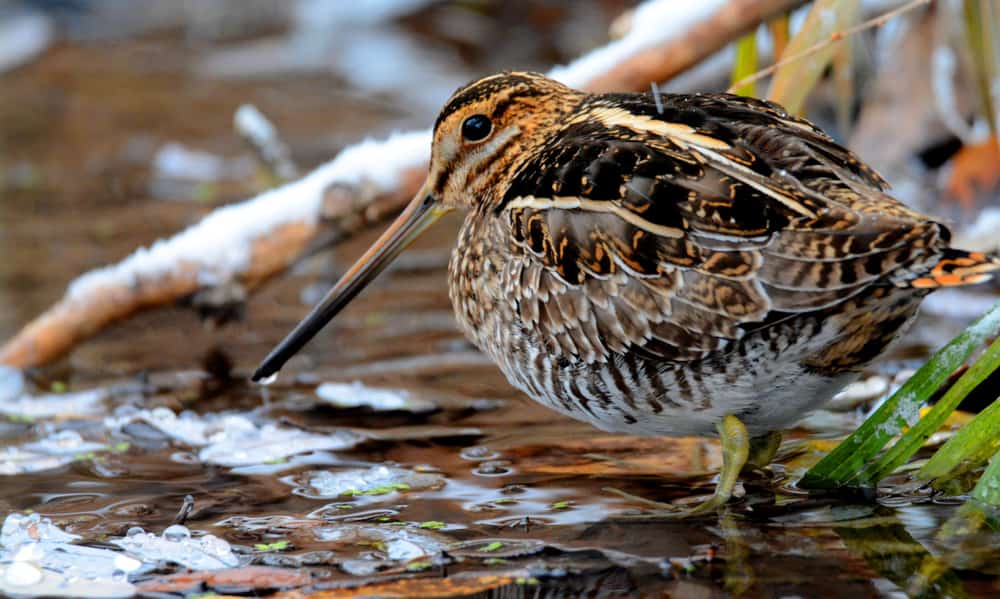
©Carrie Olson/Shutterstock.com
Ever heard of going on a snipe hunt? Well, the bird exists – even if not the exact one you were told you’d be searching for. In fact, the Wilson’s Snipe (Gallinago delicata) is a stocky bird with big pectoral muscles that make up about half their weight. This helps make them fast little birds – and difficult to catch for prey. Their eyes are set super far back in their heads, as well, allowing them to see almost as well behind them as they ahead or to the side.
Wilson’s Snipes have intricately patterned buff and brown stripes, a white belly, and long, dark bills. They’re part of the sandpiper family and prefer marshy habitats like bogs and flooded fields during winter and migration, and shorelines during the rest of the year.
Other Sandpipers
Other sandpipers you may see in the USA include:
- Dunlin
- Greater Yellowlegs
- Lesser Yellowlegs
- Red Knot
- Willet
- Ruddy Turnstone
- White-rumped sandpiper
- Wood sandpiper
- Western sandpiper
- Upland sandpiper
- Terek sandpiper
- Stilt sandpiper
- Sharp-tailed sandpiper
- Solitary sandpiper
- Spoonbilled sandpiper
- Rock sandpiper
- Purple sandpiper
- Pectoral sandpiper
- Curlew sandpiper
- Green sandpiper
- Marsh sandpiper
- Common sandpiper
- Buff-breasted sandpiper
- Broad-billed sandpiper
- Baird’s sandpiper
Shorebirds: Stilts and Avocets
Stilts and Avocets are two types of birds that help to create the Recurvirostridae bird family. Many of these shorebirds are plentiful, but others, like the black stilt, are endangered in some regions of the world.
Black-necked Stilt
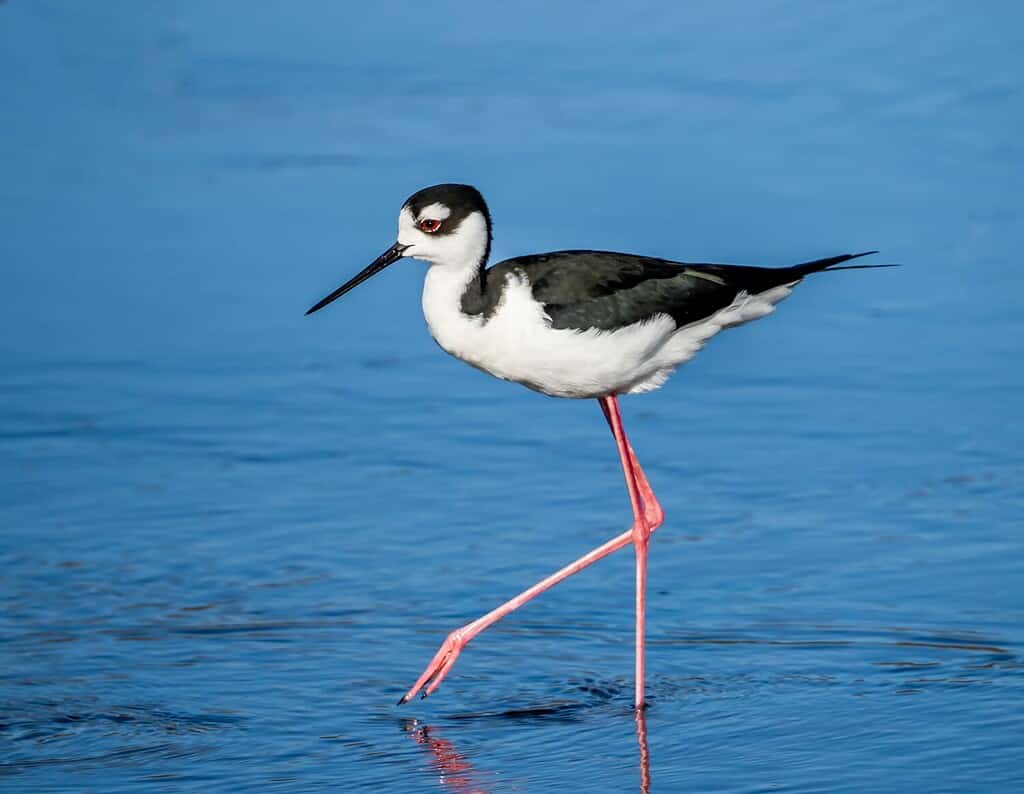
©Jim Schwabel/Shutterstock.com
The black-necked stilt, or Himantopus mexicanus, has a black back and white belly, with needle-like bills. Their legs are red, helping them look distinctive, and they look a bit delicate. They favor open habitats and shallow water areas with limited vegetation. They love marshes, shallow lakes, mudflats, and retaining pools. By wading in shallow water, they find their food, grabbing it off the water’s surface.
American Avocet

©Ingrid Taylar / Creative Commons
The Recurvirostra americana, or American avocet, spend most of their time in the US foraging for food in saltwater wetlands or shallow freshwater wetlands. Breeding adults have rusty heads and necks, with the neck turning gray after breeding. Black and white wings, a white body, and blue-gray legs help make them distinguishable from others. They use a method known as scything for catching their prey. This means they sweep a slightly open bill from side to side while they walk forward. They catch prey in their bills along with witer.
Shorebirds: Jacana

©Imogen Warren/Shutterstock.com
A tropical shorebird family, Jacanas will be found in warmer climates only. They have long, thin legs, and exceptionally long, thin toes and talons. This allows them to walk on top of lily pads and other floating vegetation in their marshy habitats. They can forage through deeper waters, this way, without sinking. They tend to have colorful plumage and warmer tones than most shorebirds, with yellow, red, or orange markings. Only 8 species make up the Jacana family.
- Lesser jacana
- Comb-crested jacana
- Pheasant-tailed jacana
- Bronze-winged jacana
- Northern jacana
- Wattled jacana
- African jacana
- Madagascar jacana


/cloudfront-ap-southeast-2.images.arcpublishing.com/nzme/6LNWD6GT2VARDOOSGYRZR3SRGU.jpg)





